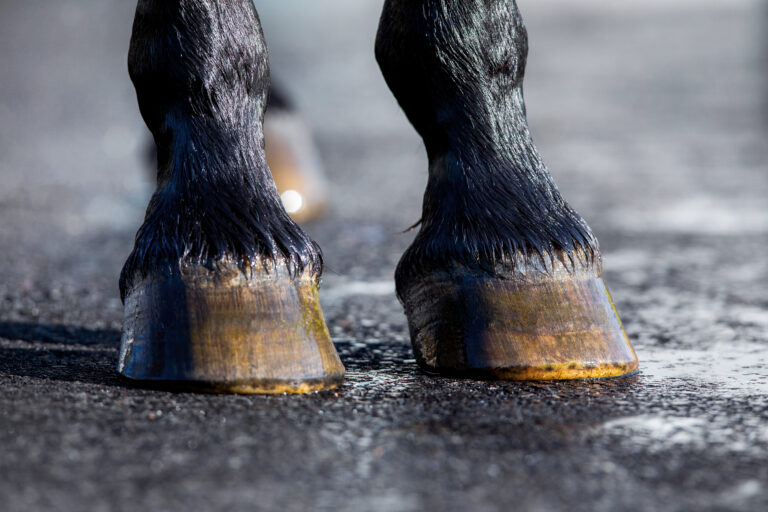
Gastroduodenal ulceration syndrome (GDUS) in foals is a recognized but poorly understood disease syndrome in which foals may display decreased growth, colic, bruxism or no apparent clinical abnormalities. Ulceration of the stomach can be confirmed via gastroscopy. In a subset of cases, pyloric, duodenal stenosis can be identified. This then leads to decreased gastric emptying and may result in gastric reflux or rupture. Once stenosis occurs, medical management is often unsuccessful, and surgical intervention might be required. Surgical intervention carries a significant financial investment and studies report variable prognosis for long-term survival. Medical management can include supportive care, anti-ulcer medications and treatment of any inciting disease, such as enteritis.
A portion of foals with GDUS will perforate the stomach or duodenal resulting in septic peritonitis and death. Foals that died or were euthanized due to gastroduodenal ulceration syndrome and were submitted to the University of Kentucky Veterinary Diagnostic Laboratory had additional samples collected for testing with specific emphasis on the presence of common infectious agents that cause diarrhea in horses.
From 2020 to 2022, 16 foals with gastric-duodenal ulceration syndrome were submitted for necropsy and further testing. Ages ranged from 3 weeks to 5 months (average of 63 days) with 14 Thoroughbreds, one Warmblood and one unspecific breed. In all cases, aerobic and anerobic culture of the large and small intestine, as well as PCR for equine coronavirus, equine rotavirus A, Lawsonia intracellularis, Salmonella, Clostridium perfringens and Clostridioides difficile was performed. The pH of gastric and duodenal fluid was measured in 15 of 16 cases and a fecal flotation for parasites performed in 14 of 16 cases. Equine Rotavirus A was detected in eight of 16 cases; Salmonella sp. in one of 16 cases; and C. difficile in two of 16 cases. Gastric pH ranged from 3.22 to 6.87 (average of 5.2) and duodenal pH from 4.49 to 8.1 (average of 6.29). Visually apparent lesions were evident in the stomach in all cases, with ulceration (16 of 16) and perforation (nine of 16) most commonly observed.
Findings within the proximal duodenum and jejunum included enteritis (10 of 16), ulceration (three of 16) and perforation of the duodenum (three of 16). Microscopic findings included severe hyperkeratosis and necro-ulcerative gastritis of the non-glandular stomach, necrosis, ulceration and fibrosis of duodenum and inflammation of the outside of the intestines in cases of perforation. Additional findings included hepatitis (six of 16) and pancreatitis in (five of 16). Interestingly, findings from this group highlight the presence of rotavirus A in 50% of foals with gastroduodenal ulceration syndrome as well as the presence of concurrent hepatitis and pancreatitis in 31% of cases. Inflammation of the intestine, liver and pancreas is similar to the syndrome referred to as triaditis, which is recognized in small companion animals. This extension of infection and inflammation outside of the stomach and intestine might contribute to morbidity and mortality in these cases. It also might have diagnostic significance if correlations between hepatic values or pancreatic enzyme levels and GDUS can be identified. The significance of the high rate of PCR positivity for equine rotavirus A is not well understood and warrants further investigation.
Importantly, the primary cause of gastric ulceration, hyperkeratosis and gastritis in these cases is still unknown. Possibilities include stress, dietary changes, abnormal gastric pH secondary to motility abnormalities and vascular compromise. While an in-depth epidemiologic evaluation would be required to identify risk factors contributing to this condition, these overall findings provide some interesting insight into a common condition in foals.




